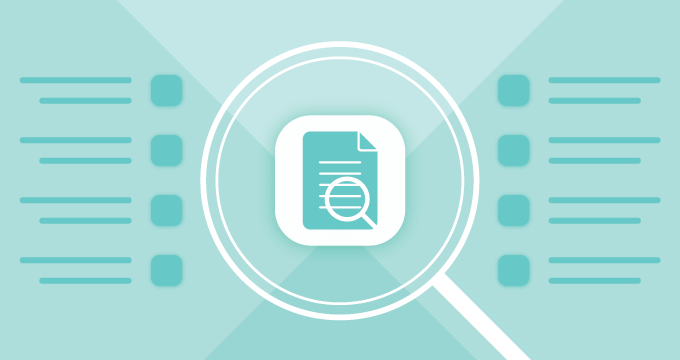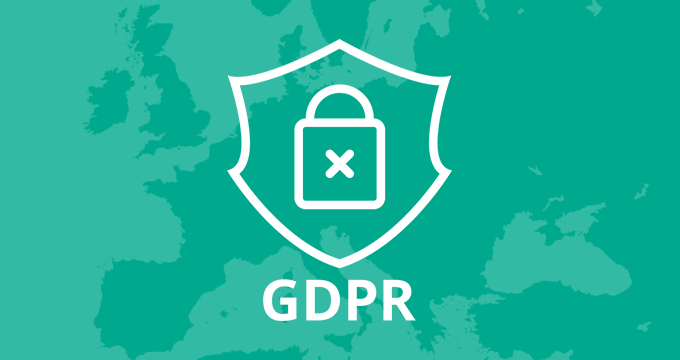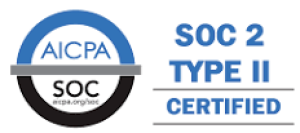Ediscovery has become one of the largest budget drains in corporate legal departments.
According to the American Bar Association, document review accounts for over 80% of total litigation spend, or roughly $42 billion per year.
Controlling these costs has never been more critical.
In this article, you’ll learn:
- Why discovery costs are so high
- What strategies you can use to optimize these costs
- How to pick the right ediscovery software
What Drives High Ediscovery Costs?
The reality is stark: only a small amount of collected data actually matters in ediscovery, meaning 97% of data collected is never produced to opposing counsel. This massive inefficiency represents the single greatest opportunity for cost savings in the legal discovery process.
Ediscovery costs have been steadily increasing, particularly for organizations in regulated sectors. Much of the expense stems from the sheer complexity of modern data environments and the lack of infrastructure to manage them efficiently.
Document review represents the primary driver of ediscovery costs, accounting for over 80% of total litigation spend. When you consider that 70% of discovery spend is tied to the review process, it becomes clear that any meaningful cost reduction must focus on minimizing the volume of documents requiring human review.
Apart from this issue, there are other multipliers contributing to the massive ediscovery spend.
Growing volumes of unstructured data
Most organizations now generate and store vast amounts of unstructured data — chat messages, social media, voice recordings, cloud documents, and more. Without proper controls, this data accumulates across different platforms, devices, and formats.
Legal teams are forced to sift through massive volumes of irrelevant content to find what’s responsive.
Larger datasets mean higher storage, processing, and review costs during litigation or regulatory inquiries.
No information governance strategy
When data is spread across multiple systems, such as individual user inboxes, unmanaged file shares, or disconnected cloud tools, it becomes time-consuming and expensive to locate relevant information.
Legal and IT teams often spend days or weeks collecting data from different departments.
Without a centralized repository, organizations risk missing key records or turning over incomplete data sets, which can lead to sanctions or adverse rulings.
Reactive ediscovery processes
Many organizations still handle ediscovery reactively — waiting for a request before initiating a manual search and collection process. This approach drives up costs and increases risk.
Reactivity leads to rushed work, mistakes, and higher legal review fees.
Outside counsel or third-party vendors are often brought in under tight deadlines, which inflates costs further.
Reliance on external legal service providers
While legal firms and consultants can bring expertise, their services come with premium hourly rates. Over-reliance on these providers for search, review, and production can quickly exceed budgets.
Even a single case can rack up tens of thousands of dollars in ediscovery-related legal fees.
In cases involving public record laws (like FOIA), these costs often can’t be passed on to the requestor.
6 Strategies to Optimize Ediscovery Costs
Centralize data archiving
One of the most effective ways to control ediscovery costs is to implement a centralized archiving system. Data archiving allows for long-term accessibility, security, and compliance. By capturing and retaining data in real time, archiving lays the groundwork for faster, cheaper, and more accurate discovery.
What is centralized archiving?
Centralized archiving involves capturing communications and digital records (emails, chats, social media, and files) and storing them in a secure, searchable repository.
All these records are indexed and timestamped to ensure integrity and traceability. They remain immutable and easily retrievable under legal hold or audit.
This is especially important for organizations that are subject to strict retention rules under regulations like FERPA, HIPAA, SEC 17a-4, and state-level FOIA laws.
How archiving reduces ediscovery costs
Archiving shortens the entire ediscovery process by eliminating the chaos of manual data retrieval through:
- Faster search — Advanced search tools allow IT and legal teams to find relevant data in minutes, not days.
- Lower review volumes — Narrowed search results mean fewer documents to review, reducing outside legal fees.
- Early case assessment (ECA) — Legal teams can quickly evaluate the scope and risk of a case before deciding whether to proceed, settle, or litigate.
- Data consolidation— Archiving breaks down silos by aggregating data from across departments and platforms into a single source of truth.
Cost-effective storage and retention
Storing active data on live systems is expensive and risky. Archiving provides lower-cost, long-term storage while also enabling retention and deletion policies that align with legal requirements.
Old or irrelevant data can be defensibly purged once it no longer serves legal or operational needs. At the same time, retention policies can be automated to apply by data type, user group, or communication platform.
Real-world example: FOIA response in education
A school district receiving a FOIA request for five years’ worth of email communications related to a former administrator would typically scramble across mail servers, PST files, and backup systems.
With a proper archiving solution:
- The district can apply a keyword and date filter or ask a chatbot to locate the exact records in seconds.
- The export is audit-ready, defensible, and meets all legal deadlines.
- Legal and IT staff can focus on review rather than extraction, saving days of effort.
Reduce manual workload through automation
Manual data management during ediscovery is inefficient, expensive, and error-prone. Automation helps organizations streamline repetitive tasks, reduce labor hours, and increase consistency across legal and compliance processes.
Automate retention and deletion policies
One of the biggest time drains in ediscovery is sorting through irrelevant or outdated data. Automating retention schedules ensures that only necessary records are preserved.
Here’s how:
- Retention rules can be configured by department, data type, or regulation.
- Records past their required retention period are automatically flagged or deleted.
- Automation prevents human error, reduces storage volumes, and simplifies review.
Streamline legal hold management
Legal holds are mandatory once litigation is anticipated. Manually tracking who is on hold, what data needs preservation, and whether custodians have complied can become a compliance risk.
By streamlining legal hold management:
- Archiving solutions with built-in legal hold features allow holds to be applied instantly across all relevant users and platforms.
- Legal teams can manage, track, and lift holds without relying on IT each time.
- Automation helps demonstrate defensibility in court or to regulators.
Advanced search and tagging
Using manual search methods across live systems is slow and incomplete. With an automated archiving system:
- Keyword tagging, Boolean search, and metadata filters allow precise targeting.
- Search results are deduplicated and indexed, reducing what needs to be reviewed.
- Results can be saved and reused for recurring requests or ongoing investigations.
Automated export for legal review
Once relevant data is identified, it must be exported in a legally defensible format. Automating this step ensures chain-of-custody, consistency, and formatting standards.
Exports can include metadata, timestamps, and audit trails, while this process reduces reliance on IT staff to manually compile, format, and validate datasets.
Bring ediscovery in-house where possible
Relying on outside legal service providers for every ediscovery need is unsustainable. Third-party expertise is sometimes necessary, but many stages of the ediscovery process can now be handled internally with the right tools.
This shift can dramatically cut costs.
The high cost of outsourcing
External legal vendors charge premium rates, often by the hour or by the gigabyte, for services like data collection, processing, culling, and review.
Even straightforward cases can quickly exceed $50,000 in service fees. Costs rise even higher in large-scale investigations, multi-party litigation, or regulatory audits.
All this adds up, and you can make significant cost cuts by resorting to in-house teams.
Internal tools can match or exceed vendor capabilities
Modern archiving platforms now come with built-in ediscovery modules designed for use by in-house teams. These tools allow organizations to:
- Perform complex searches with customizable filters.
- Apply legal holds
- Assign and track custodians.
- Export data with full audit trails and metadata.
- Support FOIA and regulatory requests without third-party involvement.
By using in-house tools, organizations retain control over the process and timelines while reducing reliance on expensive external consultants.
Improved security and data control
Keeping ediscovery processes internal also reduces the risk of data exposure. Sending sensitive information to outside counsel or vendors always introduces additional risk.
Internal teams have a better understanding of data context and organizational structure. Data remains protected under your organization’s governance policies and access controls.
Use outside counsel strategically
Outsourcing still has its place, especially in complex or high-stakes litigation. The goal isn’t to eliminate vendors entirely, but to use them strategically:
- Handle the majority of early case assessment and basic review in-house.
- Bring in outside counsel for legal strategy, privileged review, or expert testimony.
This hybrid model offers a balance between cost savings and legal effectiveness.
Eliminate data silos
One of the most persistent challenges in ediscovery is locating all relevant data quickly and reliably.
When information is scattered across multiple systems like servers, cloud drives, messaging platforms, and legacy backups, it significantly increases search time, labor costs, and legal risk.
Eliminating data silos is a critical step in controlling ediscovery costs.
What are data silos?
Data silos occur when departments or teams use disconnected systems to store and manage information. For example:
- HR uses a separate cloud platform for communications.
- Legal stores documents on a network drive with limited access.
- IT maintains backups in a proprietary format, inaccessible to compliance staff.
Each silo requires a separate effort to search, access, and extract data during discovery.
The cost of fragmentation
When responding to a legal or regulatory request, fragmented data creates duplication of effort and increases the likelihood of missing or inconsistent records.
In other words:
- Staff must chase down data owners and manually pull from different systems.
- Review teams spend time reconciling formats and searching across unindexed platforms.
- Data from certain apps, like Slack, iMessage, Zoom, or WhatsApp, may be entirely overlooked, creating compliance gaps.
These inefficiencies inflate costs and slow down the entire ediscovery timeline.
Centralizing communications with unified archiving
A unified archiving solution captures all communication channels, including email, messaging, social media, and cloud storage, into a single repository.
This:
- Allows IT and legal teams to search across platforms in one place.
- Reduces the risk of missing key data or failing to preserve responsive records.
- Makes audits and litigation readiness faster and less disruptive.
Such centralization is particularly valuable for organizations under tight response deadlines, like K–12 school districts facing FOIA requests, or healthcare providers responding to HIPAA investigations.
Collaboration between departments
Breaking down data silos also requires better collaboration between legal, IT, compliance, and HR teams.
You can do this by:
- Defining clear roles and responsibilities for data governance.
- Establishing cross-departmental workflows for managing legal holds, audits, and investigations.
- Using shared tools and standardized processes to eliminate friction.
The result: faster access to accurate data and lower ediscovery spend.
Define retention policies to minimize data
Reducing the volume of data your organization retains, and keeping it only for as long as legally required, is one of the most effective ways to cut ediscovery costs.
With less data to search, process, and review, organizations can respond faster and lower their exposure in litigation or audits.
Why more data means higher costs
Holding on to everything “just in case” is a common but costly mistake. The more data you store, the more you’ll have to sift through during ediscovery.
That means:
- More time and labor to identify responsive documents.
- Higher processing and hosting costs (especially with external vendors).
- Increased legal review volumes, which directly drive up fees.
Older, irrelevant, or duplicative data adds little value but significantly increases risk and expense.
What is data minimization?
Data minimization is the practice of limiting the collection and retention of information to what’s necessary for legal, operational, or regulatory purposes.
To implement this tactic:
- Retain only what’s required by law, policy, or business need.
- Automatically delete data after its retention period expires, unless on legal hold.
- Avoid storing multiple versions or backups of the same records across platforms.
Minimization should be paired with strong classification and retention frameworks.
Defensible retention policies by regulation
An effective retention policy aligns with sector-specific compliance rules.
For example:
- Education (FERPA/FOIA) — Retain student and employee records for defined periods, but remove expired or irrelevant communications.
- Healthcare (HIPAA) — Preserve medical records for at least six years, but enforce destruction policies after that window unless needed.
- Financial Services (SEC 17a-4, FINRA) — Retain communications for a fixed period (typically 3–7 years), with immutability.
- Government — Follow state-level public records retention schedules.
These policies not only reduce storage needs but also support defensibility in litigation.
Automating policy enforcement
Manual enforcement of retention rules is difficult and often inconsistent. An automated archiving solution helps apply and enforce retention schedules organization-wide:
- Automatically classify and retain data by type, user, or department.
- Apply legal holds to suspend deletion when necessary.
- Provide full audit trails to prove policy enforcement in court.
Automation ensures compliance, saves staff time, and keeps ediscovery volumes manageable.
Organize training and coordinate internally
Even with the right tools in place, ediscovery costs can spiral if teams aren’t properly trained or aligned. Organizations that invest in cross-functional training and develop coordinated workflows are better equipped to respond efficiently and keep costs under control.
Why training matters
Technology alone doesn’t solve ediscovery problems — people do. When IT, legal, and compliance teams know how to use archiving and ediscovery tools effectively, they:
- Respond faster to litigation holds, FOIA requests, and audits.
- Avoid errors in data collection, export, or classification.
- Use fewer external resources, reducing legal fees and response times.
Ongoing training ensures that staff are confident in their roles and tools.
Educate staff on responsibilities and risks
Each team involved in the ediscovery process has a specific role. Clear training on responsibilities helps avoid duplication, oversights, or delays.
- IT teams need to understand how to apply and track legal holds and manage export requests.
- Legal teams should be fluent in using search, tagging, and review features.
- Compliance officers need to know how to validate policy enforcement and demonstrate defensibility.
Training should also include the legal risks of mishandling data, missing deadlines, or failing to preserve relevant records.
Create standard workflows and playbooks
Without standardized procedures, every request becomes a fire drill. Establishing workflows and documented playbooks streamlines responses and improves accountability.
To achieve this, you should:
- Define a step-by-step process for responding to discovery or public record requests.
- Create templates for legal holds, response logs, and communications with custodians.
- Build a chain of responsibility and escalation points to prevent bottlenecks.
These playbooks are particularly valuable in public agencies and school districts, where roles may shift or staff turnover is common.
Conduct regular drills and reviews
Just like incident response, ediscovery readiness should be tested. Periodic drills or simulated requests help identify weaknesses and refine internal processes.
Don’t forget to:
- Test how quickly your team can locate and export a specific data set.
- Review response times, data accuracy, and coordination between teams.
- Adjust tools or workflows based on what’s working and what isn’t.
This proactive approach avoids surprises when a real request or subpoena hits.
How to Choose the Right Archiving and Ediscovery Technology
The right ediscovery solution should simplify your workflows, reduce reliance on external providers, and support long-term compliance. Investing in the right technology can pay off significantly by cutting recurring ediscovery costs and reducing legal risk.
What to look for in an ediscovery solution?
When evaluating archiving and ediscovery tools, prioritize features that support speed, accuracy, and defensibility:
- Advanced search — Boolean logic, proximity search, and metadata filters for pinpointing specific data.
- Legal hold capabilities — Ability to quickly apply, manage, and release holds without disrupting users.
- Export options — Tools that allow defensible export of data in legally accepted formats with audit trails.
- Multi-channel support — Coverage for email, Microsoft Teams, Slack, SMS, social media, and file shares.
- Access controls and audit logs — Granular permissions and transparent activity tracking.
- Cases — The ability to group all evidence into a single folder-like case and assign file custodians.
A good platform should reduce manual steps and make complex processes manageable in-house.
Performance and scalability
Look for fast indexing and near-instant search results, even across millions of records. Ensure the system can handle future volumes without requiring significant reconfiguration or additional licensing.
This is especially important for large school districts, state agencies, or expanding healthcare networks.
Pricing transparency and predictability
Some vendors use pricing models based on data volume or number of discovery requests, which can make budgeting unpredictable.
Look for flat-fee or seat-based pricing with no hidden fees for exports or holds. Another important factor is understanding what’s included and whether features like support, training, and upgrades cost extra.
Transparent pricing helps prevent financial surprises during high-pressure legal events.
Questions to ask vendors
Before committing to a platform, ask critical questions such as:
- How long does it take to run a complex search across all archived data?
- Can you apply legal holds organization-wide in real time?
- Is your data stored in a compliant, WORM (Write Once, Read Many) format?
- What’s the turnaround time for support tickets or technical issues?
- Are training and onboarding included?
Answers to these questions will help you gauge how well a solution aligns with your operational needs and compliance responsibilities.
Avoiding vendor lock-in
Choose vendors that allow easy data migration and provide open export formats. Lock-in can limit your flexibility and increase long-term costs.
Ensure you can extract your data if you choose to switch providers. Also, it’s important to ask for documentation on how data will be preserved and handed off if needed.
Being able to switch vendors without penalties keeps your organization in control.
Summary of the Main Points
- Ediscovery costs are rising, with document review alone making up over 80% of litigation expenses. Plus, 97% of collected data is never produced, revealing a major opportunity for cost savings.
- Unstructured data and fragmented systems increase search times, storage needs, and review volumes. Another driver of high ediscovery costs are reactive processes and overuse of external vendors.
- Tactics for cutting discovery costs include: centralized archiving, automation, bringing ediscovery in-house, eliminating data silos, data minimization and defensible retention policies, and cross-functional training and standardized workflows.
- Additionally, regular drills and audits strengthen discovery readiness and prevent last-minute issues.
- Choosing the right technology ensures scalability, defensibility, and long-term cost reduction. Transparent pricing and vendor flexibility help maintain control over budget and data portability.
Contact us at sales@jatheon.com or book a demo to see how Jatheon Cloud can help your organization with ediscovery searches and lawsuit management.
FAQ
What types of data are typically involved in ediscovery?
Emails, chat messages, social media, cloud documents, voice recordings, and even communication platforms like Slack, iMessage, and Zoom can be subject to ediscovery.
What is centralized archiving and how does it help with ediscovery?
Centralized archiving captures and stores data from multiple sources in a searchable, secure repository. It reduces review volumes, simplifies legal holds, and accelerates data retrieval.
Can an archiving solution help us comply with regulations like HIPAA, FOIA, and SEC 17a-4?
Yes, the right archiving platform supports compliance by ensuring data integrity, retention, immutability, and audit-readiness across all communication channels.
What is Early Case Assessment (ECA), and why is it important?
ECA helps legal teams quickly gauge the scope and risk of a case, often leading to faster settlements or informed decisions that avoid unnecessary legal expenses.
How can we reduce the amount of data subject to review?
By enforcing strong data minimization and retention policies, automating deletion of expired content, and using precision search tools to narrow down relevant data sets.
What’s the risk of using reactive ediscovery processes?
Reactive approaches cause delays, drive up legal fees, and increase the likelihood of errors, incomplete disclosures, or compliance violations.
Read Next:How AI Is Reshaping the Ediscovery Lifecycle in 2025 Ediscovery Software Comparison: Best Ediscovery Solutions for This Year |











